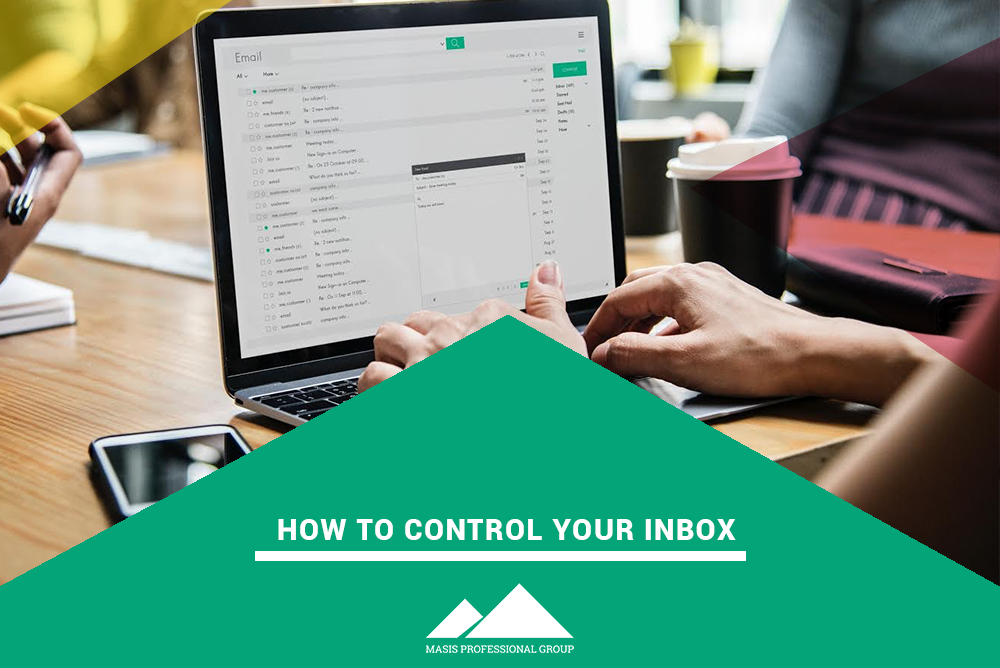30 Oct How to Control Your Inbox
Each day the average worker receives up to 121 emails and they spend up to three hours of their workday attempting to control their inbox. While email is an effective communication tool, it can hinder your productivity in the workplace. Unfortunately, if you don’t check your emails often or make these messages a priority, your inbox can get out of control. Here are a few tips to help you better control your email inbox and improve your productivity in the office.
Make it an Appointment
Just like you make appointments for phone calls or meetings, schedule blocks of time throughout your day to focus exclusively on your emails. When you go back and forth between your email inbox and other tasks, it is easy to become distracted and difficult to get back on track. Plus, if you receive notifications and alerts for incoming emails, you may become stressed, start to feel overwhelmed, and lose all focus.
Strive to set these blocks at various times throughout the day. For example, set time aside first thing in the morning, around lunch, and then shortly before you leave for the day. Find a time that works best for you and the demands of your company.
Respond Immediately
Rather than reading through all of your messages before replying, respond right away. Focus on one email at a time, rather than your entire inbox. When you respond immediately, you don’t have to worry about missing important messages, feeling stressed out about certain emails, etc. If you are not able to respond right away, let the sender know you received his or her message, and make a note in your to-do list to respond and make the task a priority.
Improve Your Responses
While clear and concise communication is vital in the workplace, it doesn’t mean you need to spend hours crafting a response. Provide short, to-the-point responses on all emails. Get to the point of the message at the beginning of your email and cut out as much fluff as possible. By saving time writing the email, you are also saving the person’s time who is reading it.
Use the Folders, Labels, and Various Setting Options
As you work to control your email inbox, you must be organized. When you leave all of your emails sitting in your inbox folder, your inbox will fill up quickly, it will become difficult to find certain messages or pieces of information, and you may feel overwhelmed when you see a large number of messages for you. To prevent this from happening, use folders, labels, and other setting options. This will allow you to organize and group your messages by projects, recipients, dates, etc.
Additionally, remember that it is okay to delete messages. If the message isn’t a priority, is of little value to you, or is old and unnecessary, delete it. You will not only be freeing up space in your inbox, but it will help to better organize this crucial area of your work life as well.
Having complete control over your email inbox is a task that will take some time. However, by developing certain habits along the way to help you organize and improve your responses, and enhance your productivity at work, you will become an email master.


